Over one billion consumers turn to Google Search and YouTube each day for help with purchasing decisions. To meet the ever-evolving needs and the abilities of today’s consumer, Google continues to transform its offerings to advance brand advertising. On May 24, 2022, at their Marketing Live event, Google unveiled the latest updates to Google’s Ad Networks, where most of the announcements focused on automation, Performance Max, and YouTube Shorts.
More and more, advertisers can depend on machine learning algorithms to identify more qualified customers and serve the most relevant ad combination to maximize performance. Merchants will soon be able to show 3D models of their products directly on Google Search while consumers will be able to use augmented reality (AR) on their mobile cameras to see how these items look in their space before purchasing them.
As artificial intelligence (AI) continues to become more and more sophisticated, it’s allowing businesses the ability to combine their data and marketing expertise with machine learning to make today’s campaigns smarter and smarter. Google’s machine learning algorithm, automation tools and products will be updated this year to further meet your objectives.
Here Are Our Top Five Takeaways:
1. Google Plans to Enhance Performance Max
What is Performance Max? Historically, Google has organized campaigns separately by ad type, i.e., search, display, shopping, and video. Performance Max is a relatively new goal-based campaign type that allows access to all ad types in one single campaign. They are the first fully automated ad campaigns of their kind. In a Performance Max campaign, ads are given the ability to show across the entire network to get the most visibility, by default.
It works by allowing advertisers to set up conversion goals, input creative (a call to action, text for ad copy, relevant images, and/or videos), and select their budget. Google will then mix and match creative and placements to find the most customers and serve the most relevant ad to maximize performance based on the account conversion goals. In another new feature, Performance Max will offer the ability to easily promote loyalty benefits to potential customers in the U.S. when they’re shopping across Google.
So far (since November 2021), those using Performance Max see an average increase of 13% total incremental conversions at a similar cost per action.
To date, options have been limited for Performance Max testing and reporting. Google announced the following additions coming to address these needs for brands and advertisers to see what works and what does not.
Coming to Performance Max:
- More tools for experimentation, like A/B tests.
- Expanded campaign management support in Search Ads 360 and the Google Ads mobile app.
- Support for store sales goals to optimize for in-store sales, in addition to store visits and local actions.
- Maximize impact with burst campaigns for a set period to help meet in-store goals during seasonal events.
These additions will help us deliver even better results across Google’s ad channels and inventory.
2. New Reports Coming to Insights
What are insights and how will they help your campaigns? Insights are relatively new to the Google Ads offerings. Google has begun to identify trends in your market and understand your performance. It looks for trends across Google that are relevant to the products and services that you advertise. It helps by drilling down into each insight to get more detailed information about account performance and identifies new areas of potential opportunity.
Coming Soon:
- Attribution reporting will show how your ads work together across Google surfaces to drive conversions.
- Budget insights reporting will capture new opportunities for budget optimization and show us how spend is pacing against budget goals.
- Audience insights for first-party data will show how your customer segments are driving campaign performance.
Given these new insights, campaign managers will now be able to leverage Google’s algorithm with their knowledge to increase results and drive key goal efforts in a way they have not been able to do before. We’ll also be able to share those insights with our clients.
Example:

3. Video Ads Are Becoming More Accessible
Google video action campaigns and App campaigns will now scale to YouTube Shorts.
YouTube Shorts averages over 30 billion daily views and now video action campaigns and App campaigns automatically scale to YouTube Shorts. Later this year, advertisers will also be able to connect their product feeds to their campaigns and make video ads more shoppable. This will allow product feeds to start showing up on YouTube Shorts, making video ads more shoppable.
Google is looking for ways to add short video ads to Discover.
It’s not ready yet, but Google is looking for ways to bring short video ads to Discover in a seamless fit with organic content.
Connected TV campaigns will now be available using Display and Video 360.
Connected TV includes all devices that fit into the following categories: streaming devices, Smart TV, gaming consoles, and set-top boxes. Examples include Roku, Apple TV, Xbox, Samsung Smart TV, and set top boxes delivering traditional cable. Advertisers will have the ability to use Display and Video 360 to create Connected TV campaigns and Over-The-Top (OTT) to reach affinity, in-market, and demographic audiences across YouTube and other ad-supported connected TV apps and URLs.
Google has an All-New Asset Library
A new account-level Asset library will be available to store all your digital creative assets. It will also give you the option to create video ads using YouTube-optimized templates. Google suggests users will be able to create a video ad in 60 seconds using this tool.
4. Responsive Search Ad (RSA) Improvements
Google is rolling out automatically created assets to responsive search ads later this year, which is designed to improve ad relevance. This feature would automatically generate assets based on content from landing pages and existing ads in the account. If you choose to use this option, Google Ads will display the best performing combination of provided assets and automatically created assets. *Pharmaceutical clients will be opted out of this feature due to the sensitive topics and special policy regulations.
RSAs will have an all-new, mobile-first layout that allows you to showcase your brand on full-screen vertical ad inventory. Google is also introducing scrollable ads and videos based on product feeds.
5. Other New Features to Enhance Brand Advertising Longevity
Conversion and Search Lift Tests
You’ll be able to measure incremental conversions based on users and geography and measure the impact of your YouTube campaigns on driving organic searches on Google and YouTube.
Google Tag Update
The global site tag will become the Google tag and get updated with new capabilities that make tagging simpler and more streamlined. Existing global site tag implementations will continue to work. But, with the new Google Tag, advertisers worldwide will soon be able to use this single tag across Google Ads and Google Analytics. No additional code will be required to combine tags, reuse tags, or manage tag settings.
Conclusion
It’s clear that Google is continuing its trend of automation and enhancing performance across all platforms. This means that if you want your business to succeed in the digital age, it’s more important than ever to stay up to date on the latest changes and innovations from Google. If you have any questions about how these updates may impact your advertising or marketing campaigns, don’t hesitate to reach out to us for help.



